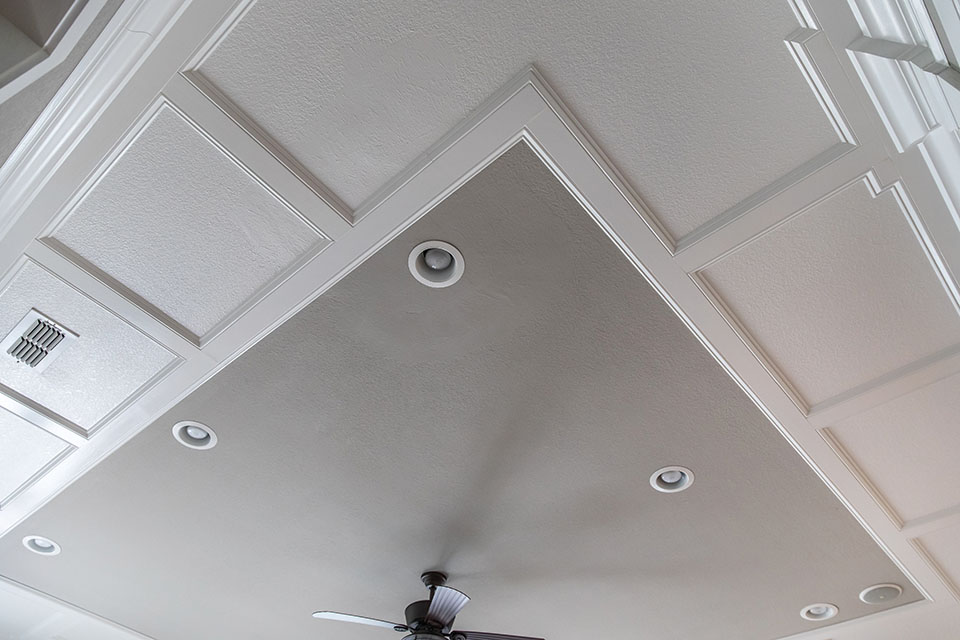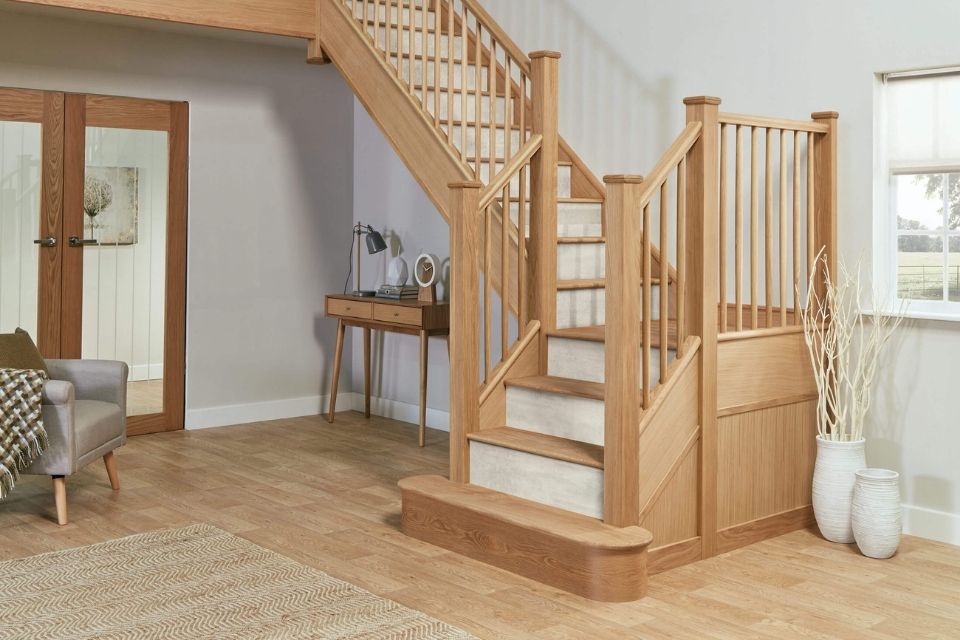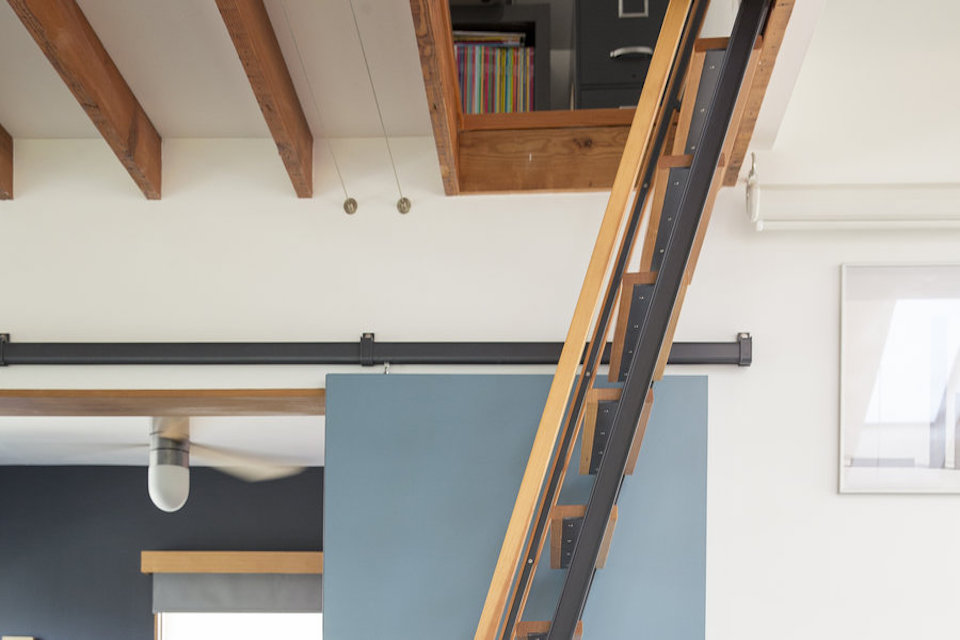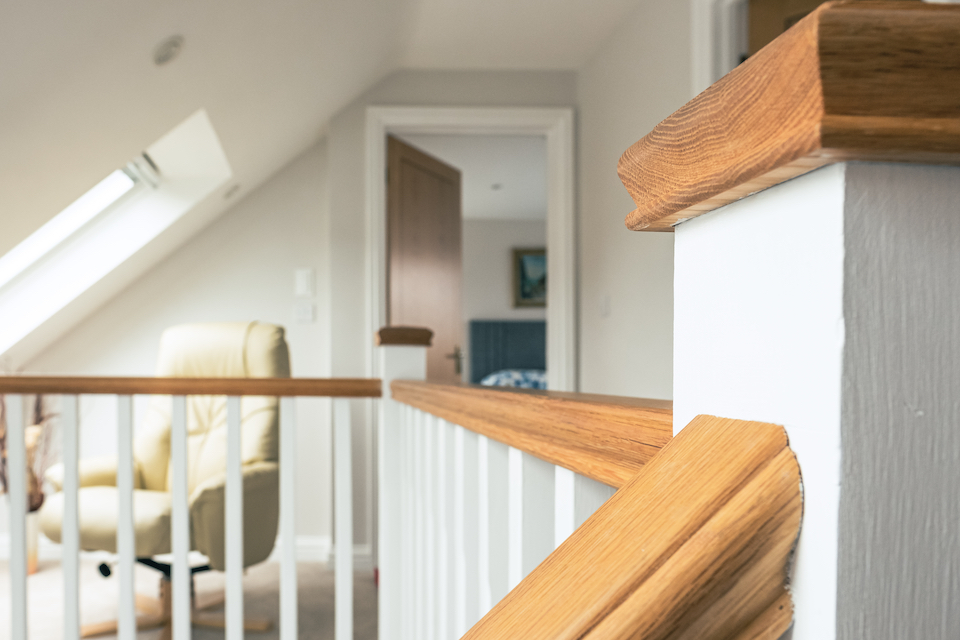How Much Does Ceiling Panelling Cost?
Ceiling panels will make your life easier because you can install them and forget about them.
There is no painting, flaking, mould, or upkeep. They are completely waterproof and can even be used in showers.
Ceiling panels are available in a variety of styles. Plain white finishes are the most popular.
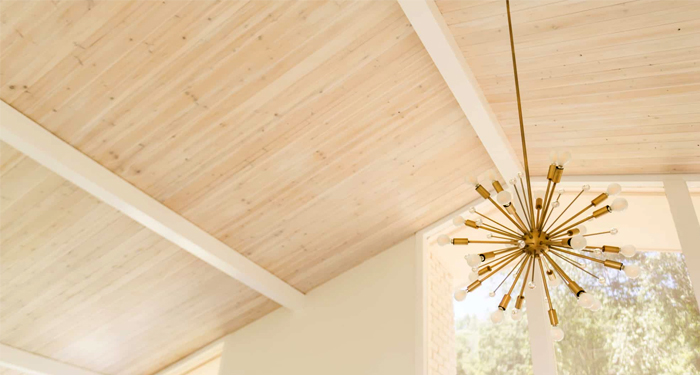
Can you use white on ceiling panels?
Some people expect the ceiling to be plain white. As a result, by using this finish on the panels, you are not drawing attention to the ceiling.
For larger rooms, longer lengths are available. This means that you can span the entire ceiling with no end-to-end joins.
But how much does ceiling panelling cost?
Here we will go through the different costs to have panels installed on your property. We will discuss the labour, additional and material costs, so you know exactly what you are paying for.
We will also go over the duration to have panels installed onto your ceiling, the different types and how much it will cost to have them removed.
Ceiling panelling at a low cost, complete with the fitting, will cost £20 to £30 per square metre in an area of 30m2 to 50m2, reducing to around £12 to £18 per square metre in larger areas.
Whereas a mid-range ceiling with panels in an area of 40m2 to 60m2 will cost around £25 to £35 per square metre, dropping to around £15 to £22 per square metre in larger areas.
In an area of 30m2 to 50m2, the high-performance ceiling complete with panels will cost approximately £35 to £45 per square metre, reducing to approximately £25 to £35 per square metre in larger areas.
The total cost of ceiling wood panelling is determined by the amount of surface area to be covered. After all, panelling one ceiling is much less expensive than covering the entire house. It also depends on the type of panelling you select.
Wood, such as a pine panelled ceiling, composite, tile, metal, and even fabric, are all options (on a wood panel).
Depending on whether you choose a budget or high-end panel, you can expect to pay between £130 and £400 per square metre on average.
Here's something else you should consider...
You can also have a custom ceiling panel design made for you. A reproduction ceiling panel in an ornate period style, for example. This can be more expensive, costing around £159 per square metre before installation costs.
Ceiling Panelling Prices
The table below will show the breakdown of the cost to install ceiling panels:
| Type of Job | Cost |
|---|---|
| 30m2 to 50m2 ceiling | £20 - £30 per m2 |
| 40m2 to 60m2 ceiling | £25 - £35 per m2 |
| Wood ceiling panelling | £130 and £400 per m2 |
The cost of hiring someone to panel your ceiling is determined by the type of ceiling and its size. The number of tradespeople hired to install the ceiling, the ease of access to your property, and your location are all price factors.
Because labour hiring prices vary across the country, where you live will have an impact on the cost of hiring a tradesperson.
On the one hand, hiring costs in the southeast are likely to be higher than the national average (London especially).
Nonetheless, costs in the north of England, Scotland, and Northern Ireland are generally lower than in the rest of the country.
- How Much Does Ceiling Panelling Cost?
- What Are The Supply Costs To Panel a Ceiling?
- What Are The Additional Costs Of Panelling a Ceiling?
- Tradesmen Costs For Ceiling Panelling
- How Long Does It Take To Install Ceiling Panels?
- Types of Ceiling Panelling
- How Much Does It Cost To Remove Ceiling Paneling?
- FAQs
- Sources
What Are The Supply Costs To Panel a Ceiling?
Ceiling panels have a number of distinct advantages, including the aforementioned ease of cleaning, waterproof properties, and mould resistance.
Other benefits include the lack of painting required, the panel's adaptability around suspended ceilings, the panel's compatibility with down-lights, and, finally, the panel's ease of installation!
Quick, clean, and requires little or no preparation. Any competent DIYer or tradesman can install ceiling panels. So if you are thinking of DIYing your ceiling panels, then don’t worry because it is possible!
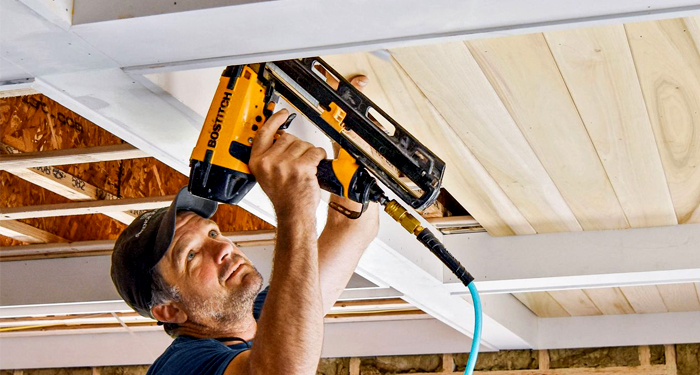
They can be installed over existing finishes. Place them on top of texturing compound or wooden cladding. They are ideal for revitalising a tired old ceiling. Remember that once installed, there will be no need for maintenance, painting, or mould removal.
Ceiling panel installation can be done in a variety of ways. But they are all quick and simple. They are usually stapled or screwed into place. You could also use an adhesive to adhere to them. Many fitters employ both adhesive and staples.
However, what are the materials required for installation, and how much do they cost? We'll go over everything you need to know right here.
Ceiling panels can be installed directly onto a plastered, lath and plaster, or artexed ceiling as long as it is even and in good condition.
If the room is an addition or new construction, the cladding can be installed directly over the plasterboard, eliminating the need to plaster. Plasterboard installation will cost between £7 and £20.
The panels can be attached to the ceiling in a variety of ways, depending on the condition of the existing ceiling, the height requirement, and whether you have access above the ceiling. Ceiling panels typically cost between £30 and £50.
You will need staples, which will cost between £4 and £11, a tape measure, which will cost between £7 and £14; adhesive, which will cost between £1 and £5, and plasterboard fixings, which will cost between £4 and £8.
If you intend to run the cladding lengths perpendicular to the joists, which cost between £12 and £20. You may also require ceiling battens, which can cost between £10 and £15.
The table below will breakdown the supply costs to panel a ceiling:
| Supply | Cost |
|---|---|
| Plasterboard | £7 - £20 |
| Ceiling panels | £30 - £50 |
| Staples | £4 - £11 |
| Tape measure | £7 - £14 |
| Adhesive | £1 - £5 |
| Plasterboard fixings | £4 - £8 |
| Joists | £12 - £20 |
| Ceiling battens | £10 - £15 |
What Are The Additional Costs Of Panelling a Ceiling?
When having your ceiling panels installed, you might realise your estimated cost has increased due to additional costs being added on.
Therefore, here we will go through the additional costs that might come up or additional jobs you might want to have installed while tradespeople are in your home.
Ceiling Repair
Repairing a ceiling can cost between £400 and £1000, depending on the size of the room and the style of the ceiling.
A professional tradesperson will almost certainly be required to repair or replace your ceiling, which will cost between £150 and £200 per day.
To determine the extent of the damage, a contractor will typically need to come out and evaluate your ceiling before repairing or replacing it. At this point, they will be able to give you a good idea of the work that will need to be done as well as an estimate of the costs involved.
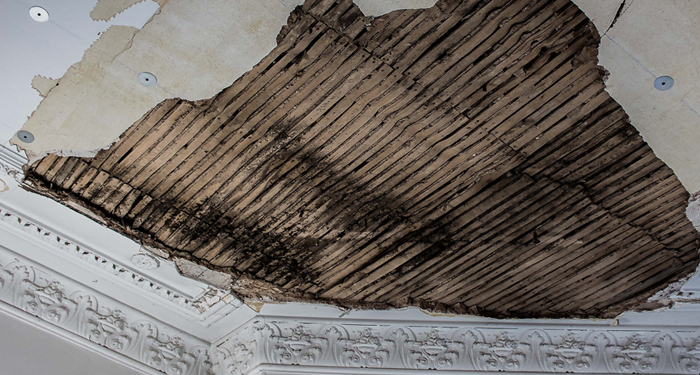
The overall cost of a ceiling repair or replacement can be influenced by your property's location. The cost of labour in London is expected to be approximate £50-£100 higher per day, or £5-£15 more per hour, than in the North or other regions of the UK.
Normally, a plasterer or a labourer will be needed to repair or replace a ceiling. A plasterer will typically charge between £150 and £200 per day, whereas a labourer will charge between £80 and £100 per day.
Small ceiling repairs are typically completed in a matter of hours, so you may be able to pay on an hourly basis. Typically, this fee ranges between £15 and £20.
A cracked ceiling repair could take a few hours, and you may be able to negotiate a fee based on the size of the repair rather than a day rate. The timeframe is primarily determined by the size of the room.
Typically, a full ceiling replacement takes 1-2 days to complete. It is common for two contractors to complete the job.
Please refer to our guide on the costs of repairing a ceiling, for further information.
Painting and Decorating
When redecorating, keep the costs of interior painting for various projects in mind. The average cost of painting a room, for example, ranges from £180 for a small bedroom to £600 for a large living room.
You will also need to consider the painting and decorating costs for other fixtures, such as skirting boards, which range from £180 to £350 and windows, which range from £400 to £1,500.
Other jobs include painting doors, which can cost between £220 and £1,600, and repainting kitchen cabinets, which can cost between £600 and £1,000.
A typical quote for hiring a painter and decorator ranges between £100 and £300 per day for large decorating jobs such as painting or wallpapering multiple rooms.
They may only charge £15 to £40 per hour for smaller paint jobs such as painting door frames and kitchen cabinets.
The time frame of a decorating job is also important because most tradesmen charge for their time, so knowing how long a job will take will help you determine the final price.
If you are only having a small bedroom painted, it should only take about a day; however, if you need any wallpaper or paint removed, this will add an extra day.
Smaller paint jobs, such as painting kitchen cabinets, may take as little as three days for a small kitchen and as much as five days for a large kitchen.
Other jobs, such as painting skirting boards, can take one to two days, whereas painting a door frame can take only three to five hours.
Please refer to our guide on the costs of interior painting and decorating, for further information.
Skip Hire
If your ceiling panel installation is going to be messy, it is probably best to hire a skip to put all your rubbish in.
The average cost to hire a 2-yard skip is £70 to £100, with a 4-yard skip costing around £100 to £160 and a 6-yard skip costing around £120 to £190.
An 8-yard skip costs between £150 and £370, a 10-yard skip costs between £180 and £410, and a 12-yard skip costs between £220 and £450.
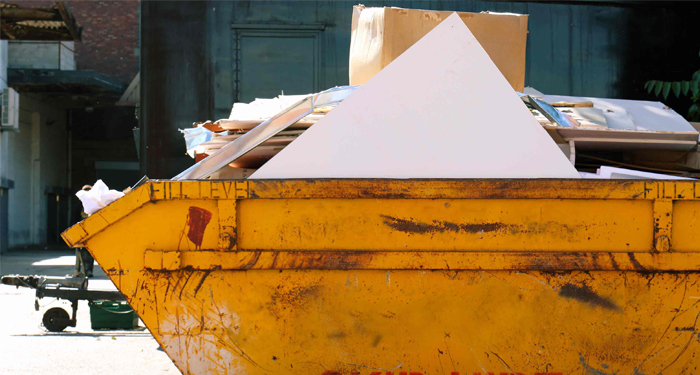
A 14-yard skip will cost between £230 and £460, a 16-yard skip will cost between £240 and £480, an 18-yard skip will cost between £280 and £500, and a roll-on roll-off skip will cost between £300 and £500.
Please refer to our guide on the costs of hiring a skip, for further information.
Location
Other price factors include the number of tradespeople hired to fit the ceiling panels, the ease of access to your property, and your location. Because tradespeople prices vary across the country, where you live will have an impact on the cost of hiring a labourer.
On the one hand, hiring costs in the southeast are likely to be higher than the national average (London especially). Nonetheless, costs in the north of England, Scotland, and Northern Ireland are generally lower than in the rest of the country.
Minimum Fee
Some companies will charge a minimum fee regardless of the job, where you live, or how long it takes to get to your property. This is unlikely to apply in most cases, but if it does, it will almost certainly be added to your total bill.
Most providers provide a cost breakdown on their website, which should give you all the information you require.
If one is not available, you can always contact them by phone or email for more information on what prices will be featured.
Number of Tradespeople
The cost of installing ceiling panels is also determined by the number of tradespeople needed, which is influenced by the size/type of the panels. The more tradespeople required, the more expensive the job will most likely be.
Duration
The length of time it takes to install your ceiling panels can have an effect on the cost. Excess mileage charges may also be applied to the duration.
The cost may be higher if issues such as ease of access cause installation to take longer. It's unlikely that it will have much of an impact if any at all, but it's certainly possible.
Tradesmen Costs For Ceiling Panelling
Putting up a new panel ceiling will entail demolishing the old one, disposing of the waste, and reinstalling the ceiling with new plasterboard.
If the property is a listed building, like for like replacement will be required under listed building consent, so removing a lath and plaster ceiling will necessitate the services of a specialist tradesperson who is familiar with this type of original material and its application.
In addition to paying for the tradesperson's skill and knowledge, the process is longer and more labour intensive than modern dry-lining and plastering.
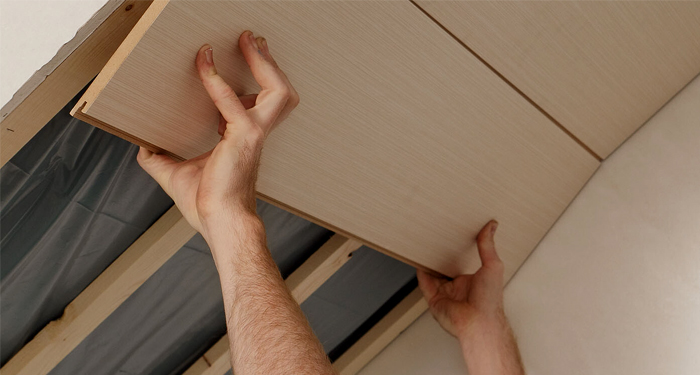
Each job would need to be assessed and quoted based on the extent of the repair and the materials involved.
Here we will go through the different costs to install ceiling panelling.
A plasterer will charge between £150 and £200 per day, while a labourer will charge between £80 and £100 per day.
If the work is straightforward and there are no hidden issues, panelling an entire ceiling should take no more than one day.
A cracked ceiling repair could be completed in a couple of hours, and it may be possible to obtain a price for a small repair rather than a day rate.
The average hourly rate would be in the region of £15 - £20, depending on location within the UK, the plasterer's experience, and the scope of the work required.
Some plasterers charge by the metre, so make sure you understand how you'll be charged before you agree on a price.
However, you can save money on labour charges by completing some jobs by yourself.
If an old ceiling needs to be removed, a homeowner could do it themselves to save money on labour. How much of the work you are willing to do yourself will be determined by your level of confidence in the task and whether you will actually save money by doing so or end up paying more for a tradesperson to correct any mistakes you may make.
How Long Does It Take To Install Ceiling Panels?
The duration to have your ceiling panel installed is an important factor as the duration can sometimes affect the overall cost as the tradespeople will be working for longer.
Here, we will go through the durations to install ceiling panels and what you should expect when the time comes.
The length of the installation process is determined by a number of factors. If you do the installation yourself, it will almost certainly take far longer than if it were done by a professional.
Ceiling panelling isn't something you should rush. Before moving on to other tiles or projects, you should take your time with it and make sure that all of the components are perfectly fastened together.
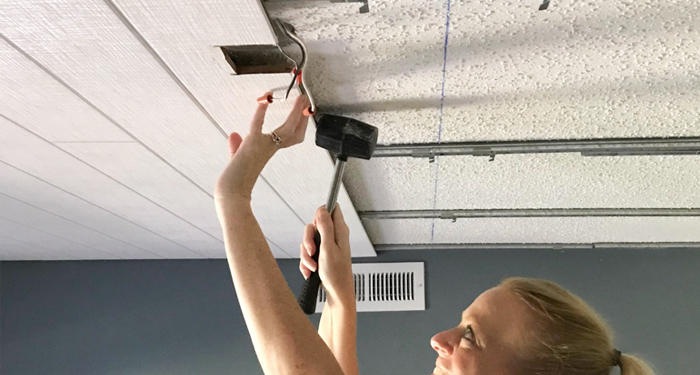
Most people believe that a ceiling panel installation can be completed in a few hours, but it will most likely take a little longer. It will probably take a couple of days for someone who understands what they're doing, assuming that all of the materials are on hand and ready to begin.
Expect the process to take longer if you're a first-timer handling it on your own, perhaps a week or more.
If your ceiling has a lot of exposed wiring, plumbing pipes, or ducts, expect ceiling installation specialists near you to raise the price even more. Working around those features takes a lot more time, and it could take a day or more to complete the work.
Types of Ceiling Panelling
If you are wanting to have ceiling panels installed in your home but are not sure where to start due to the serval types available. Here we will go through the different types of ceiling panels as well as their pros and cons.
Acoustic Ceiling Panels
To help soundproof a room, acoustic ceiling panels are employed. They're often constructed of fibreglass and put in a drop-ceiling style.
Metal strapping is put across the ceiling, and the tiles are dropped or hung from the straps, however, some brands make tiles that snap together without visible straps.
To ensure its acoustical and insulating features, acoustic ceiling panels are normally placed by a professional, but some types can be fitted by an experienced DIYer.
Because the same materials that make acoustic ceiling panels also insulate the room thermally, they are frequently utilised for insulation. They may be able to assist in lowering the heating and cooling costs of the room in which they are installed, depending on their composition.
Acoustic ceilings may transform the look and acoustics of your space. It not only enhances the beauty and feel of your home, but it also reduces or eliminates noise.
An acoustic ceiling, which comes in a variety of colours and styles, can even make your room more inviting. Other advantages of an acoustic ceiling are reduced energy usage and the concealment of unsightly wires and pipes.
Pros
- Can block out sounds
- Can hide old cracks and wires
Cons
- Are not long lasting
Plastic Ceiling Panels (PVC)
Traditional tin ceiling panels can be replaced with plastic ceiling panels, which are lighter and less expensive.
Flowers, wreaths, and repetitive designs are among the embossed patterns available on the plastic panels. They can also be utilised to give the ceiling a geometric, three-dimensional appearance.
For a do-it-yourselfer, these panels are relatively simple to install. You don't have to worry about denting or dinging the tiles because they may be dropped in or nailed up. They can be painted in the same colours and finishes as a tin ceiling.
The most significant advantage of plastic ceiling tiles is their low cost; they normally cost between £1 and £10 per panel, making them incredibly affordable.
However, a plastic ceiling, like most things, comes with a few drawbacks: Heat can damage the ceiling due to its construction and the plastic used to make it, thus ceiling lighting must be energy efficient and not emit a lot of heat.
Pros
- Affordable
- Waterproof
Cons
- Heat can cause damage
Metal Ceiling Panels
These ceiling panels are made of genuine tin are a lovely addition to any home. Despite their name, most modern metal ceiling tiles are constructed of aluminium, copper, or brass.
Although they can be dropped in, they are normally put by nailing them up and overlapping the edges of one panel with the next. Scrolls, flowers, vines, and geometric patterns are frequently featured in their designs.
Tin ceiling panels are a little more difficult to install than plastic ceiling panels, but most homeowners can still do it. If you nick or dent a panel, you can restore it with some sculpting and auto body repair material.
Tin ceiling panels are popular among homeowners and building owners because they are attractive. These ceiling panels, which were popular in Victorian times, provide an antique aspect to any structure, old or modern.
Plain silver panels are the cheapest option, and their gleam can attract visitors' attention, but many building owners choose to have a design stamped on their tin ceiling tiles.
You can choose from a variety of styles or develop a bespoke pattern to fit your business or house. These ceiling tiles can be painted any colour the buyer desires, and a high-gloss finish can be applied to keep the sheen for years.
Pros
- Can be painted
- Good for modern homes
Cons
- More expensive
Cork Ceiling Panel
Cork ceiling panels are a type of environmentally friendly ceiling panels that can also be used to insulate your home. Cork ceiling panels are inherently fire and water-resistant, as well as sound dampening, making them an excellent all-around ceiling panel for many homes.
Cork ceiling panels can be dropped in or adhered to the ceiling. They can also be used to create decorative patterns and decorations by overlapping them.
Some experienced homeowners may find them simple to deal with, but most homeowners would prefer to hire professionals to install this sort of tile. Cork ceiling tiles are reasonably affordable, at around £5 per tile.
Pros
- Eco-friendly
- Fire and water resistance
Cons
- Hard to install
How Much Does It Cost To Remove Ceiling Paneling?
If you have panels on your ceiling and you want them removed there will be a cost, here we will go through the costs to remove a ceiling panel and what you should expect.
Taking down the old structure, disposing of the waste, and replacing the ceiling with new plasterboard are all steps in the process of removing ceiling panels.
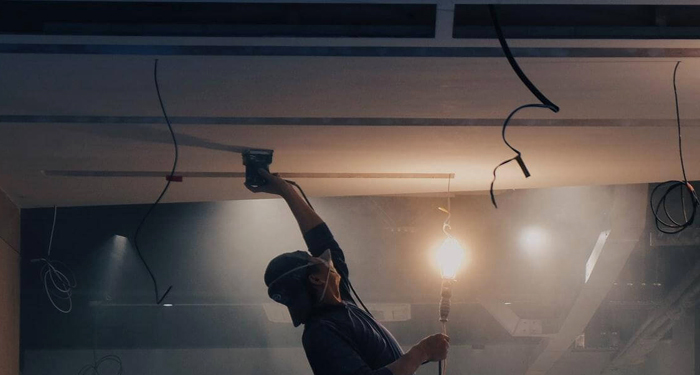
If the house is a listed building, like for like replacement will be required under listed building approval, therefore removing a lath and plaster ceiling will necessitate the skills of a specialist tradesperson who is experienced with this sort of original material and its application.
The cost of removing your ceiling panels ranges from £400 to £1000. The final cost will be determined by a number of factors, including the type of ceiling being placed and the size of the room in which it will be installed.
You should expect to pay roughly £150-£200 per day for a professional to repair or replace your ceiling. With this in mind, you should plan your budget based on the number of contractors you'll need and how long the job will take.
The overall cost of removal is influenced by the size of the ceiling. The length of time it takes to accomplish the removal will also be affected by its size. Because older ceilings are more sensitive, they may be more difficult to repair or replace.
Because this type of job is more difficult to do and takes longer, the replacement cost will almost certainly be greater. Some ceilings, such as this one, may require specialised knowledge.
FAQs
Q: What are ceiling panels?
A: Ceiling tiles, often called ceiling panels, are lightweight building materials that are used to cover ceilings.
They are usually meant to improve the appearance and acoustics of a room and are placed in a steel or aluminium grid to give some thermal insulation.
Q: What are the advantages of ceiling panels?
- It is unpleasant to be in a room that is cold. When you think how much time you may spend in the bath or shower, though, a cold bathroom must definitely be the worst of all. PVC panels insulate your property, making your rooms more comfortable.
- Installing PVC ceiling panels is a breeze. Battening can be installed first, and then the panels can be attached to it. Depending on the size of your bathroom, they can be cut to fit and installed quickly. Once you have all of the necessary tools, you should be able to complete the installation process quickly and efficiently, even without assistance.
- You may easily solve moulding by installing ceiling panelling. They're also quite simple to clean; all you have to do is wipe them down with a moist towel. A paint job cannot be cleaned in the same way. Because the panels will be warmer than your ceiling and walls, they will be considerably less likely to foster the condensation that may be a bathroom's nemesis.
Q: What ceiling panels are the best?
A: PVC ceiling panels are strong and long-lasting. They are resistant to warping and bending and can persist for years.
PVC ceiling panels, unlike gypsum and POP, are not brittle and therefore less prone to be damaged while handling. They are a less expensive option than traditional POP or gypsum ceiling panels.
Q: What are ceiling panels made of?
A: Ceiling panels are created from a variety of materials, including processed, recycled, and natural materials, depending on the tile.
Recycled newsprint, clay, perlite, starch, and fibreglass are among the materials utilised, with various amounts of each depending on the tile's qualities and performance.
Q: What are ceiling panels made for?
A: Through a construction job consisting of a flat surface with a light structure, ceiling panels allow for a reduction in the height of the room in question.
They serve a dual purpose: they are both practical and aesthetic, with a covering made of thermo-insulating, sound-absorbing, and/or sound-insulating or fireproof material.
Sources
- https://www.diyhowto.co.uk/projects/ceiling-cladding.htm#.YeBTVP7P1PZ
- https://ceilingdirect.co.uk/suspended-ceiling-cost/
- https://bathroommarquee.co.uk/ceiling-panels/.
- https://homeimprovement.lovetoknow.com/misc-home-improvement/types-ceiling-tiles
- https://allpanels.co.uk/ceiling-panels-3-advantages-of-installing-them-in-your-bathroom/

